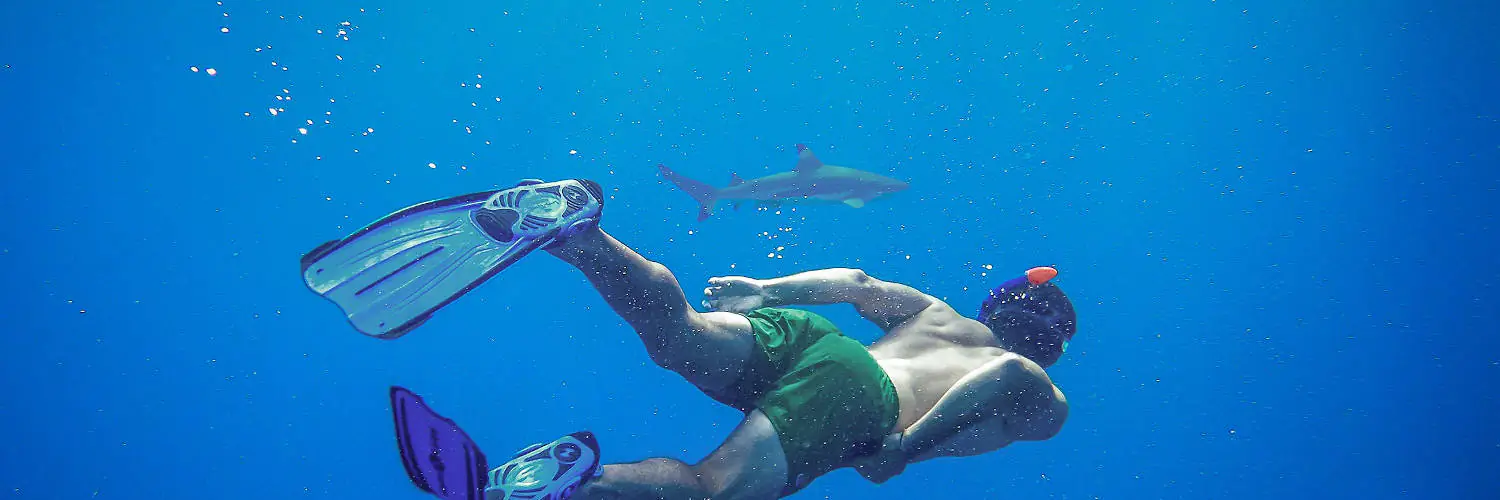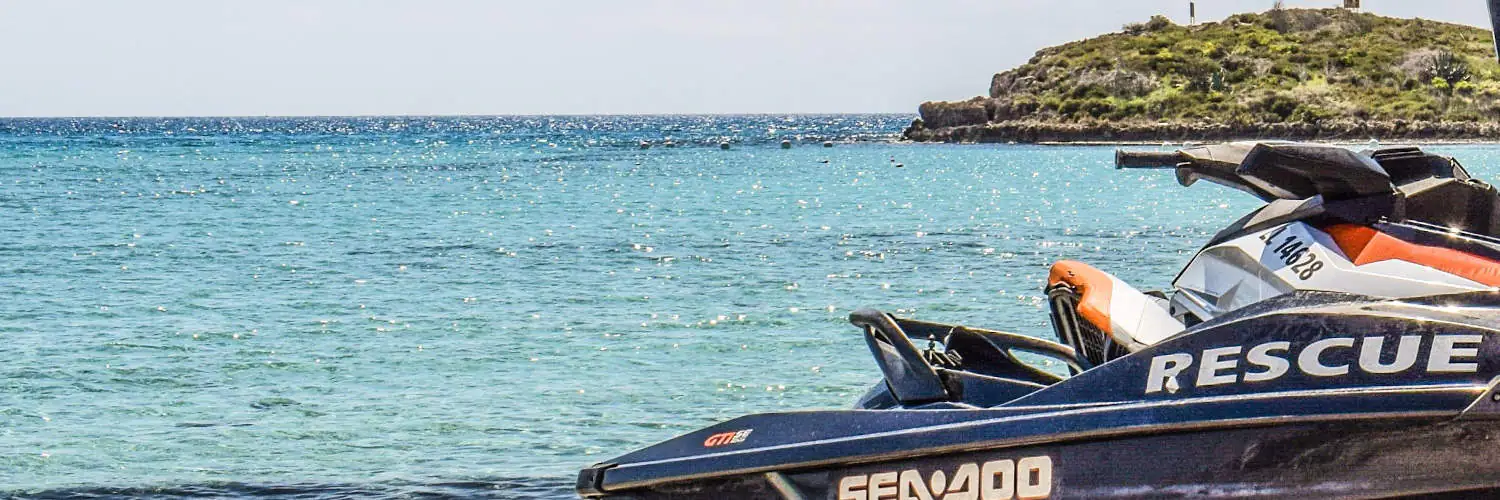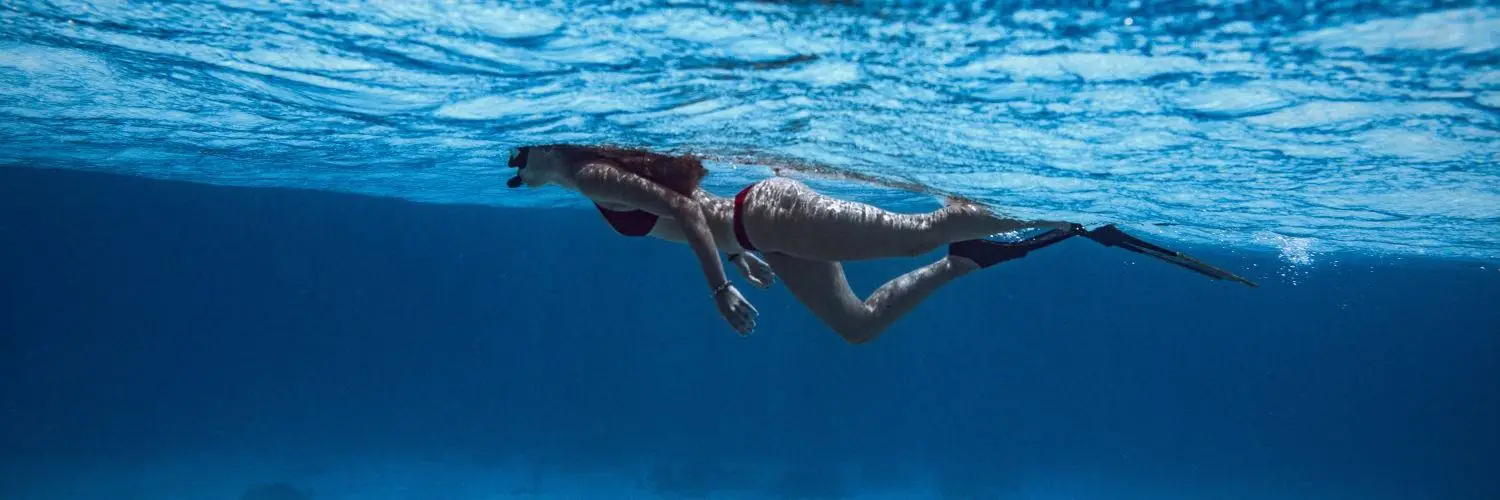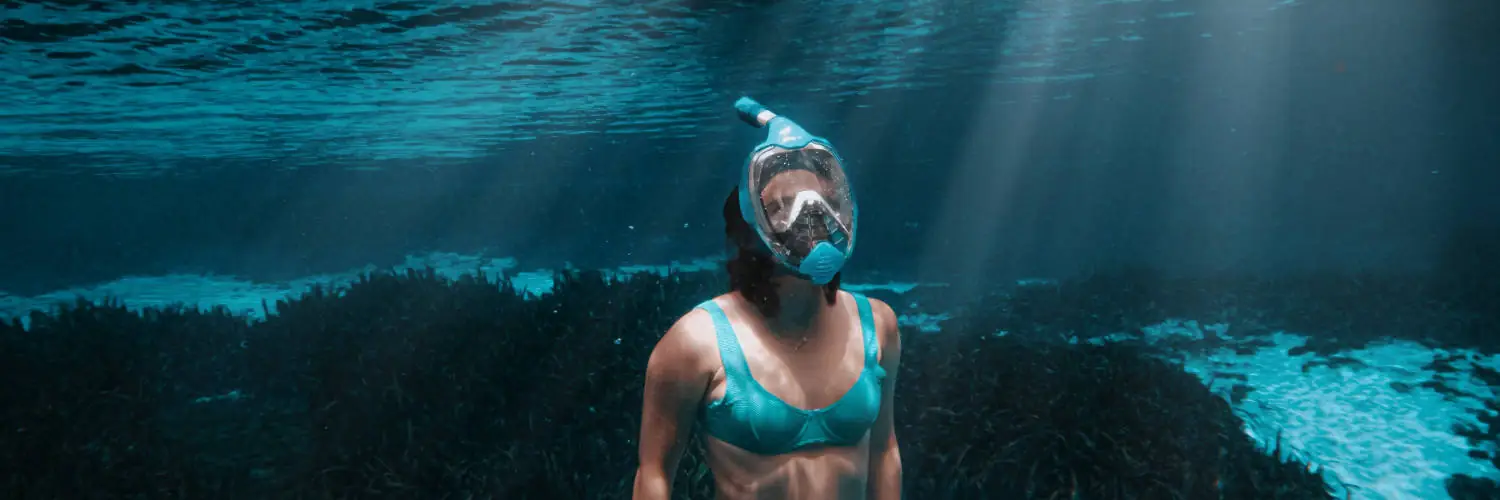Snorkeling is a popular aquatic activity that provides the extraordinary experience of observing underwater life in its natural habitat. The activity typically takes place in shallow waters, with significant points of interest located close to the surface. Snorkelers equip themselves with a diving mask, a shaped breathing tube called a snorkel, and usually swim fins. The snorkel, a crucial piece of equipment, allows the swimmer to breathe while keeping their face submerged, watching the vibrant marine ecosystem just below the surface.
In terms of depth, snorkeling is usually practiced in water ranging from surface level to about 5 meters (16 feet) deep. This range allows snorkelers to safely observe coral reefs, fish, and other marine life without the need for the extensive training and equipment required for scuba diving. The depth is limited by the length of the snorkel tube and the need to equalize pressure; beyond a certain depth, the snorkeler would be unable to draw breath due to the water pressure on the tube.
Safety and accessibility make snorkeling an approachable activity for people of varying levels of skill and fitness. Since it’s performed near the surface, individuals can easily lift their heads out of the water to breathe normally whenever needed, making it suitable for beginners and experienced swimmers alike. The shallow water ensures that emergency ascents can be completed quickly and with minimal risk.
Table of Contents
Understanding Snorkeling Depths
When snorkeling, the depth one can reach is influenced by limitations of breath-holding capacity and water pressure as well as the design of snorkeling equipment.
Breath-Hold and Water Pressure
The average depth for snorkeling is typically from the surface down to about 5 meters (16 feet). Breathing through a snorkel tube is only feasible at shallow depths where the oxygen supply is ample and carbon dioxide can be effectively expelled. The capacity to hold one’s breath is critical as it determines how long a snorkeler can stay submerged and enjoy the underwater scenery.
As a snorkeler descends, water pressure increases, affecting the body, particularly the lungs and ears. To avoid ear barotrauma, snorkelers must equalize the pressure in their ears to the surrounding water pressure, a technique often necessary beyond a depth of 1 meter (3 feet), where the impact of pressure becomes noticeable. The ability to equalize comfortably can limit or extend the depth one can reach while snorkeling.
Snorkeling Equipment and Depth
The snorkeling equipment used has a significant impact on how deep one can snorkel. The mask provides clear vision underwater, while fins contribute to efficient movement. Using a wetsuit can offer thermal protection and some buoyancy, making the experience safer and more comfortable.
The snorkel tube length is typically about 12-15 inches, which is optimal for breathing at the surface. Using a longer tube would increase the breathing resistance and the risk of inhaling water, thus, a snorkel’s design inherently limits the depth one can reach. Additional gear like flotation devices can enhance safety, especially for beginners or those snorkeling in challenging conditions, by helping maintain positive buoyancy near the surface.
Overall, snorkelers should select the appropriate gear for their activity and recognize their personal limits for depth based on comfort, skill level, and safety considerations.
Diving Safety and Marine Interaction
Safety during snorkeling is paramount, and interactions with marine life offer both wonder and potential hazards. It is essential that snorkelers educate themselves on recognizing snorkeling hazards and the implications of their encounters with marine life to maintain a respectful and safe experience.
Recognizing Snorkeling Hazards
Visibility: Good visibility is crucial for both safety and enjoyment while snorkeling. Snorkelers should check weather conditions before entering the water, as poor visibility can increase the risk of losing orientation and encountering hazards unnoticed.
Breath-hold and Confidence: While snorkeling, individuals rely on their ability to hold their breath when submerged. It is important to never overestimate one’s breath-hold capabilities as this can lead to shallow water blackout. Confidence in the water comes from knowledge and practice; inexperienced snorkelers should consider using a snorkel vest for added buoyancy.
Boats and Currents: Awareness of one’s surroundings is vital. Snorkelers should always display a dive flag to alert nearby boats of their presence. Understanding and respecting the strength of ocean currents can prevent dangerous situations.
Marine Life and Ecosystem
Marine Life Interactions: When observing marine life such as sea turtles, fish, and even sharks, snorkelers should maintain a safe distance. Direct contact with aquatic creatures not only poses a risk to the snorkeler but also to the animals themselves.
Coral Reefs: Snorkelers should avoid touching or standing on coral reefs as they are delicate ecosystems that can easily be damaged. Even a small touch can destroy years of coral growth. Observing from a distance helps protect the diverse ecosystem these structures support.
Protection of Aquatic Life: Shops offering snorkeling gear, like dive shops, often provide guidance on interacting with the environment responsibly. They can be a resource for learning about local marine life and how to appreciate it without causing harm.








